Organic Portraits
From the beginning, the intent of the Organic Portraits project was to create a series of timeless and fundamentally beautiful images that would create awareness for—and help preserve—the world’s rainforests. In the 1950s, about 15 percent of Earth’s landmass was covered with (oxygen-generating and carbon-dioxide storing) rainforests. As of today, fewer than 70 percent of those forests remain.
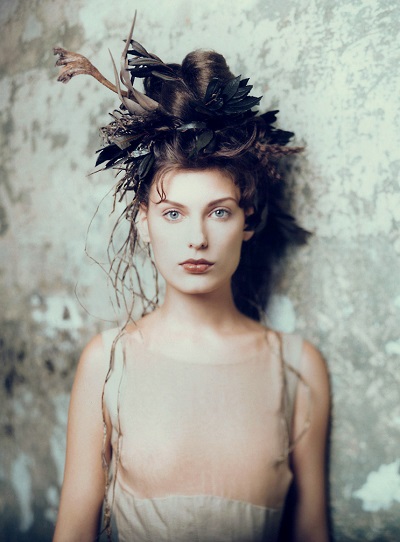
Model: Taynee; Photographer: John F. Cooper
Luckily the current rate of deforestation has slowed dramatically but that doesn’t mean our destructive activities will be curtailed; more of these crucial ecosystems could disappear by the close of this decade. It is my belief they benefit the world more by being present rather than existing only in photographs, videos and the annals of history. The aim of this project is to drive home the understanding that our rainforests— the lungs of our Earth— are both vital and in dire need of protection.
Most of the photographs produced for Organic Portraits, which feature striking subjects against simple backdrops, use large-format Polaroid film. Polaroid is now extinct; it’s eerily prophetic that the very medium used to create a series of images intended to preserve the world’s rainforests is now, itself, no longer.
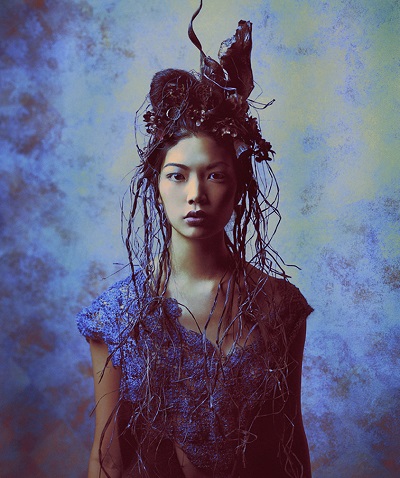
Model: Angie; Photographer: John F. Cooper
The cameras used in the series (each a work of art in their own right) were a 1950 8×10 Deardorff View Camera, and a 1980 4×5 Deardorff View Camera. Handcrafted from mahogany and brass, they are beautiful pieces of functional sculpture that were designed to last. The cameras are no longer manufactured and only a handful survive in the world today.
For those who have had the privilege of shooting with view cameras, you know that the image is projected upside down and backwards on the ground glass on the back of the camera. Viewing images in this manner forces you to think outside the box to achieve the results you want. Each Polaroid takes up to two minutes to process and each is a one-of-a-kind original. With large-format photography at a large aperture, there is a shallow depth of focus, and using the tilts and shifts on the camera, the plane of focus can be altered as well. The result is an image that is ethereal and dreamlike. It is difficult to achieve the look of a large-format Polaroid with any other medium.
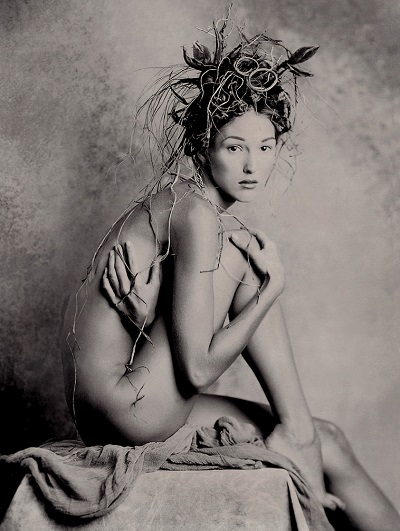
Model: Diana; Photographer: John F. Cooper
When I began shooting the series, digital photography was still in its infancy. I used to call Polaroid the poor-man’s digital, but now it has become a novelty. Although it’s now common to check an image on the back of a camera or on a computer monitor, there is something wonderfully tactile about holding a print in your hands minutes after it has been taken.
As we shot Organic Portraits, 4×5 and 8×10 Polaroids lined the tables and countertops; a visual timeline showed each session’s progression. Prints were examined prior to making the next image. This process lends itself to a more methodical, deliberate, careful, and artisanal experience.

Photographer: John F. Cooper
Organic Portraits is by far the most personal work I have ever produced— it has been part of my life for well over a decade. Many of the images were produced just before the tragic events of 9/11, a time when the whole world seemed to focus on America’s vulnerabilities and resilience. At that point, the project was put on hiatus. It wasn’t until an energetic and passionate environmental advocate, Summer Rayne Oakes, contacted me, that I thought to revive the program. Her enthusiasm and support for the Organic Portraits project has been relentless. I am forever grateful.
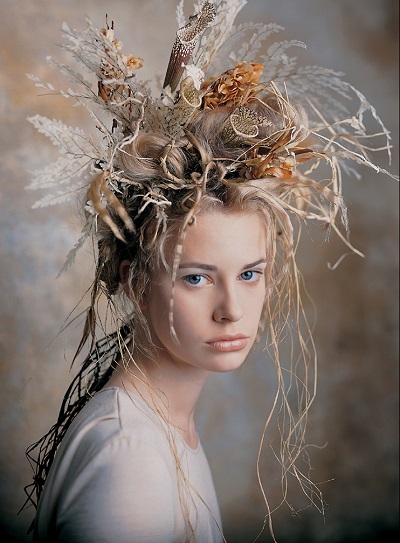
Photographer: John F. Cooper
I am also grateful to the generosity of those who believed in the vision of Organic Portraits along the way. It involved the collaboration of nearly 100 models, fashion designers, backdrop painters, and studios—and all the talent inherent to those ingenious people. I am especially indebted to my friend, Peter D. Brown, whose talents and creativity are beyond measure. His vision and skill in constructing each hair sculpture is visual testimony to his genius.
Organic Portraits has been a labor or love for so long that in a way, it is both strange and wonderful to see the fruits of so much energy and passion come together to create such a meaningful visual opus.
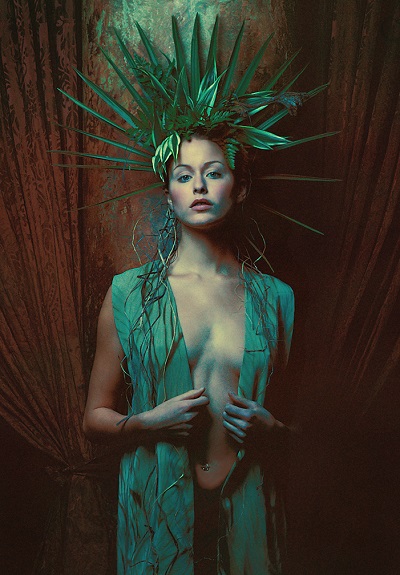
Photographer: John F. Cooper
I’ve found that the longer you hold onto something, the harder it can be to let go. Perhaps that is why I feel so many emotions knowing that for the first time, this project can finally be viewed in one place. The images we have created are as beautiful as they were when they were first born in our imaginations. The cause that they support—saving our rainforests and the indigenous people who call them home—is as vital (no, more so) than when the project first began.
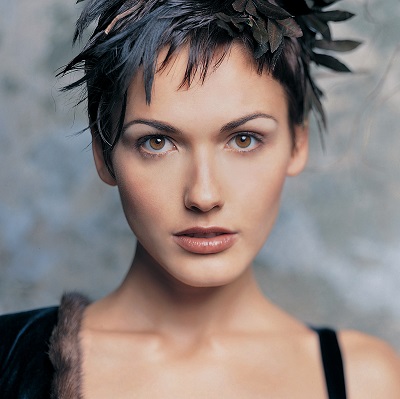
Photographer: John F. Cooper



May 29, 2015 at 9:53 am, Sally Day-Long said:
Beautiful shots! xx
May 27, 2015 at 1:00 pm, James Madison said:
“… designed to last. The cameras are no longer manufactured and only a
handful survive in the world today.” These statements sound rather
contradictory, unless only a handful were ever manufactured. And as to
why Land invented the instant image, legend has it that his 3-yr old
daughter asked why she could not see the photo now. Nothing about rain
forests that seems rather revisionist as best.
November 07, 2014 at 6:37 am, Justin Bonaparte said:
Beautiful work, kudos to all involved!